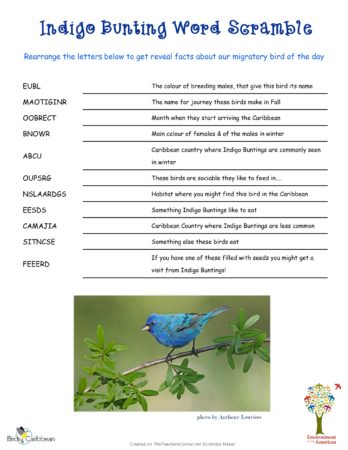Celebrate World Migratory Bird Day (WMBD) with us in our virtual “Birds Connect Our World” edition! Have fun learning about a new migratory bird every day. We have colouring pages, puzzles, activities, and more. Download for free and enjoy nature with your family at home.
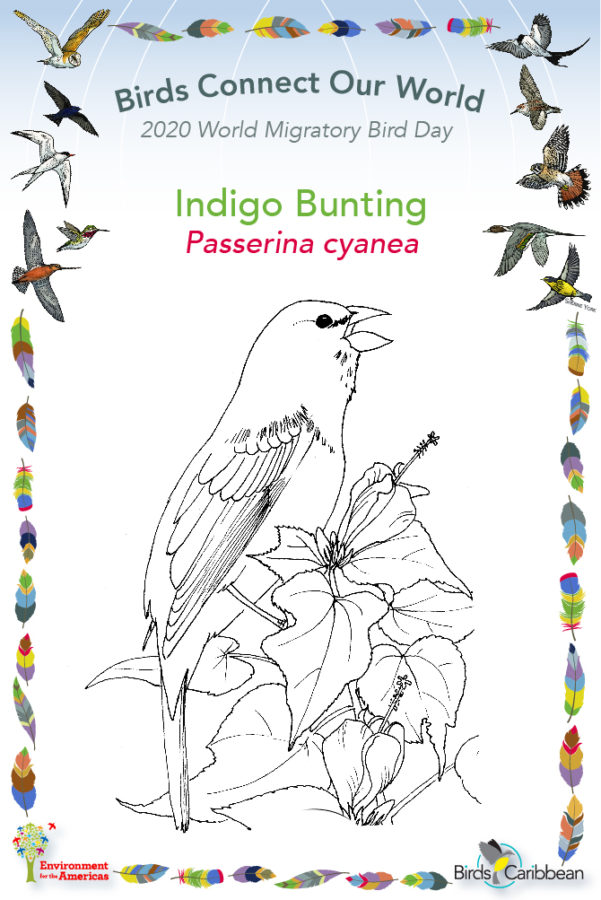
Migratory Bird of the Day: Indigo Bunting
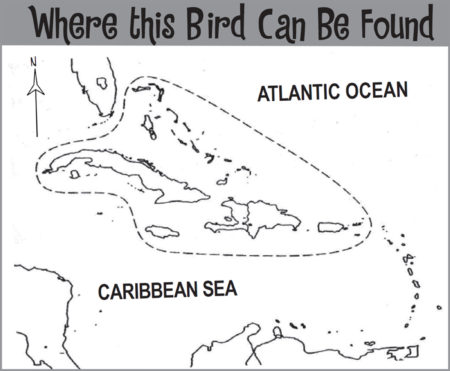
Indigo Buntings are well named. Males in breeding plumage are bright blue all over, with a purple-blue hue on the head. Females are cinnamon brown above, and paler below with faint streaking on the breast, and a blue tinge on the wings and tail. During fall and winter, males are a ‘patchy’ mix of brown and blue. Immature males resemble females. These stocky birds have finch-like conical bills and short tails.
Indigo Buntings breed across eastern North America. Most migrate in flocks to their wintering grounds in Mexico, Central America, southern Florida, and the northern Caribbean. You can follow their movements throughout the year on this ebird science page. These birds migrate at night, and use the stars to find their way. Unfortunately, Indigo Buntings are popular birds for the pet trade and are the target of illegal bird trappers in many countries, including Cuba, where they are prized for their beautiful songs.
Indigo Buntings are in the Caribbean from October through to early May. They are most commonly seen in the Bahamas, Cuba, Cayman Islands, Puerto Rico, and the Virgin Islands. They can also be found on other islands, such as Jamaica, Hispaniola, northern Less Antilles, but are less common there. In the Caribbean you might spot a bright blue male Indigo Bunting during spring, just before they head back to their breeding areas.
Indigo Buntings often feed in groups, and can be quite vocal as they flock together. Listen for their sharp twit calls. These shy birds can be found in grassy areas, rice-fields, woodlands, pasture edges, and dry scrub. They feed on small seeds, berries and a variety of insects. Indigo Buntings will also come to seed-feeders, so if you have one, keep an eye out for this lovely bird in your garden. Learn more about this species, including its range, photos, and calls here.
Colour in the Indigo Bunting!
Download the page from Migratory Birds of the West Indies Colouring Book. Use the photos below as your guide, or you can look up pictures of the bird online or in a bird field guide if you have one. Share your coloured-in page with us by posting it online and tagging us @BirdsCaribbean #WMBD2020Carib
Listen to the calls and song of the Indigo Bunting
The calls of the Indigo Bunting are repeated emphatic “chip” sounds
The song of the Indigo Bunting sound like, “Sweet, sweet–where, where–here, here—see it, see it.”
Puzzle of the Day
Click on the images below to do the puzzles. You can make the puzzle as easy or as hard as you like – for example, 6, 8, or 12 pieces for young children, all the way up to 1,024 pieces for those that are up for a challenge!
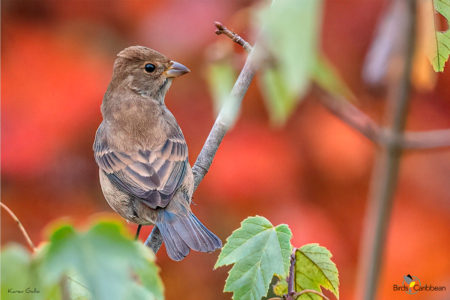
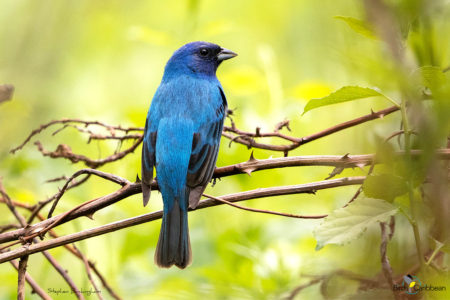
Activity of the Day
FOR KIDS: How much do you know about Indigo Buntings? Test your knowledge with this Indigo Bunting Word Scramble. You can find the answers by reading the text in this blog post, and by looking at the pictures of Indigo Buntings. You can find the answers here.
FOR KIDS AND ADULTS:
- Take a walk and see if you can spot any migratory birds, perhaps you might spot and Indigo Bunting. Use a bird field guide or the FREE Merlin bird ID app to help you identify the birds you are seeing.
- Enjoy the videos below of Indigo Buntings in the wild! The first shows a male Indigo Bunting feeding on seeds at a bird feeder. He is moulting so has patches of blue and brown feathers. The second shows the all-brown female foraging on the ground. In the third video a completely blue male, in breeding plumage, is feeding on seeds from a plant.
- Visit MigratoryBirdDay.org for many more free activities and resources to learn about migratory birds, their threats and conservation actions you can take.

